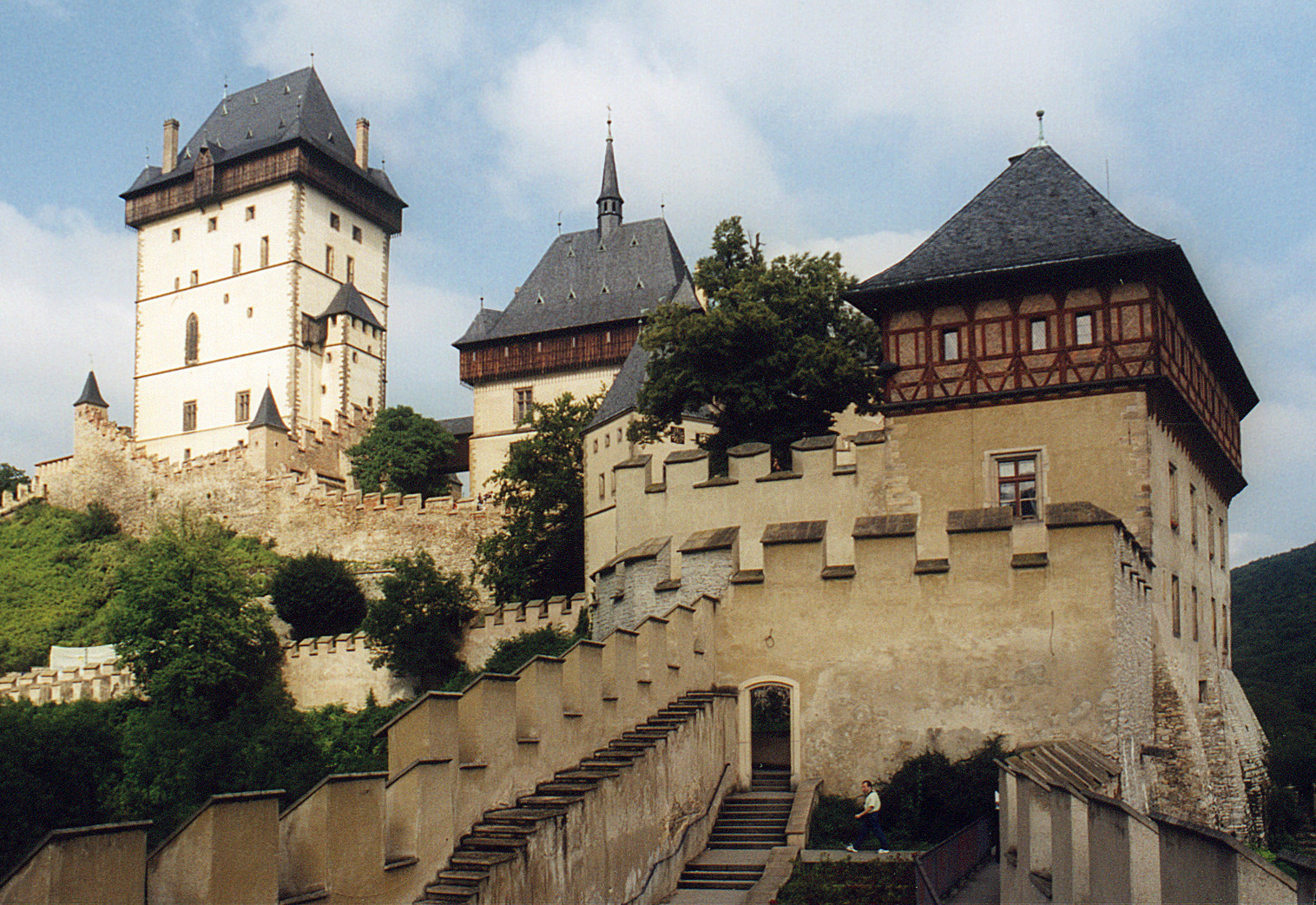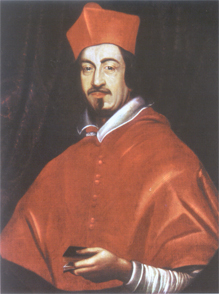|
Rožmitál Pod Třemšínem Castle
Rožmitál pod Třemšínem Castle (, ) is a castle in Rožmitál pod Třemšínem in the Central Bohemian Region of the Czech Republic. It was originally built in the Gothic architecture, Gothic style the 13th century and rebuilt in the Renaissance style in 16th-century on behalf of Florián Gryspek. Since 1958, it has been protected as a Cultural monument (Czech Republic), cultural monument. The castle is privately owned. Since 2018 it's been managed by a group of volunteers. History The Gothic architecture, Gothic castle, originally named Rosenthal, was founded in the first half of the 13th century by Oldřich of Buzic. He was also founder of a new family branch called the Lords of Rožmitál. His son Sezima gave half of the castle and the estate to the Archbishop of Prague in 1347. This division of ownership caused disputes between Sezima's brother Zdeněk and Archbishop Arnošt of Pardubice. The archbishops owned their half until the beginning of the Hussite Wars. In 1436, ... [...More Info...] [...Related Items...] OR: [Wikipedia] [Google] [Baidu] |
Rožmitál Pod Třemšínem
Rožmitál pod Třemšínem () is a town in Příbram District in the Central Bohemian Region of the Czech Republic. It has about 4,200 inhabitants. The historic town centre is well preserved and is protected as an Cultural monument (Czech Republic)#Monument zones, urban monument zone. Administrative division Rožmitál pod Třemšínem consists of nine municipal parts (in brackets population according to the 2021 census): *Rožmitál pod Třemšínem (2,950) *Hutě pod Třemšínem (110) *Nesvačily (27) *Pňovice (209) *Skuhrov (43) *Starý Rožmitál (370) *Strýčkovy (95) *Voltuš (227) *Zalány (154) Etymology According to legend, the castle that was built here was surrounded by rose bushes, and therefore named Rosenthal ("rose valley" in German). The German name was later transcribed into Czech as Rožmitál. Geography Rožmitál pod Třemšínem is located about southwest of Příbram and southwest of Prague. It lies in an outcrop of the Benešov Uplands, surrounded by ... [...More Info...] [...Related Items...] OR: [Wikipedia] [Google] [Baidu] |
Moravia
Moravia ( ; ) is a historical region in the eastern Czech Republic, roughly encompassing its territory within the Danube River's drainage basin. It is one of three historical Czech lands, with Bohemia and Czech Silesia. The medieval and early modern Margraviate of Moravia was a crown land of the Lands of the Bohemian Crown from 1348 to 1918, an imperial state of the Holy Roman Empire from 1004 to 1806, a crown land of the Austrian Empire from 1804 to 1867, and a part of Austria-Hungary from 1867 to 1918. Moravia was one of the five lands of First Czechoslovak Republic, Czechoslovakia founded in 1918. In 1928 it was merged with Czech Silesia, and then dissolved in 1948 during the abolition of the land system following the 1948 Czechoslovak coup d'état, communist coup d'état. Its area of 22,623.41 km2 is home to about 3.0 million of the Czech Republic's 10.9 million inhabitants. The people are historically named Moravians, a subgroup of Czechs, the other group being calle ... [...More Info...] [...Related Items...] OR: [Wikipedia] [Google] [Baidu] |
List Of Castles In The Czech Republic ...
This is a list of castles and chateaux in the Czech Republic, organized by regions. Central Bohemia (S) Hradec Králové (H) Karlovy Vary (K) Liberec (L) Moravia-Silesia (T) Olomouc (M) Pardubice (E) Plzeň (P) Prague (A) South Bohemia (C) South Moravia (B) Ústí nad Labem (U) Vysočina (J) Zlín (Z) Notes See also * List of castles in Europe * List of castles External links Czech Republic - Manors, Castles, Historical TownsHrady.cz {{Châteaux Czech Republic Castles A castle is a type of fortified structure built during the Middle Ages predominantly by the nobility or royalty and by military orders. Scholars usually consider a ''castle'' to be the private fortified residence of a lord or noble. This i ... [...More Info...] [...Related Items...] OR: [Wikipedia] [Google] [Baidu] |
Nosferatu (2024 Film)
''Nosferatu'' is a 2024 American Gothic film, Gothic horror film written and directed by Robert Eggers. It is a remake of the film ''Nosferatu, Nosferatu: A Symphony of Horror'' (1922), which was in turn inspired by Bram Stoker's novel ''Dracula'' (1897). It stars Bill Skarsgård, Nicholas Hoult, Lily-Rose Depp, Aaron Taylor-Johnson, Emma Corrin, and Willem Dafoe. Development began in 2015, when Eggers planned to make it his second film; he described it as a passion project but eventually opted to delay its production. Skarsgård and Depp were cast in lead roles in September 2022. Filming took place primarily at Barrandov Studios in Prague between February and May 2023. ''Nosferatu'' had its world premiere in Berlin on December 2, 2024, and was theatrically released in the United States by Focus Features and internationally by Universal Pictures on December 25. The film received positive reviews from critics and was a commercial success, grossing $181.3 million worldwide on a ... [...More Info...] [...Related Items...] OR: [Wikipedia] [Google] [Baidu] |
Zamek Rozmitalptr
Zamek (the Polish word for "castle") may refer to: *Zamek, popular name for the palace called the Imperial Castle in Poznań *Zamek, Pomeranian Voivodeship Zamek is a settlement in the administrative district of Gmina Stary Dzierzgoń, within Sztum County, Pomeranian Voivodeship, in northern Poland. It lies approximately north of Stary Dzierzgoń, east of Sztum, and south-east of the regiona ..., a village in northern Poland * Zamek, West Pomeranian Voivodeship, a village in north-western Poland See also * {{disambig ... [...More Info...] [...Related Items...] OR: [Wikipedia] [Google] [Baidu] |
Czech Television
Czech Television ( ; abbreviation: ČT) is a public television broadcaster in the Czech Republic, broadcasting six channels. Established after breakup of Czechoslovakia in 1992, it is the successor to Czechoslovak Television founded in 1953. History 1953–1992: Czechoslovak Television Founded on 1 May 1953, Czechoslovak Television (ČST) was the state television broadcaster of Czechoslovakia used as a Propaganda, state propaganda medium of the then Socialism, socialist state. It was known by three names over its lifetime: , (until 1990), and (from 1990 until 1992). ČST originally consisted of a single channel and limited experimental broadcasting in 1953. Regular broadcasts began on 25 February 1954 and on 10 May 1970, a second channel was launched. The broadcast language of ČST was predominantly Czech in the first channel, Slovak for selected programming, and both for news. The second channel was split into two, broadcasting various "national" language programming in th ... [...More Info...] [...Related Items...] OR: [Wikipedia] [Google] [Baidu] |
Velvet Revolution
The Velvet Revolution () or Gentle Revolution () was a non-violent transition of power in what was then Czechoslovakia, occurring from 17 November to 28 November 1989. Popular demonstrations against the one-party government of the Communist Party of Czechoslovakia included students and older dissidents. The result was the end of Czechoslovak Socialist Republic, 41 years of one-party rule in Czechoslovakia, and the subsequent dismantling of the command economy and conversion to a parliamentary republic. On 17 November 1989 (International Students' Day), riot police suppressed a Student activism, student demonstration in Prague. The event marked the 50th anniversary of a violently suppressed demonstration against the Nazi storming of Prague University in 1939 where 1,200 students were arrested and 9 killed (see International Students' Day#Origin, Origin of International Students' Day). The 1989 event sparked a series of demonstrations from 17 November to late December and turned ... [...More Info...] [...Related Items...] OR: [Wikipedia] [Google] [Baidu] |
Nationalization
Nationalization (nationalisation in British English) is the process of transforming privately owned assets into public assets by bringing them under the public ownership of a national government or state. Nationalization contrasts with privatization and with demutualization. When previously nationalized assets are privatized and subsequently returned to public ownership at a later stage, they are said to have undergone renationalization (or deprivatization). Industries often subject to nationalization include telecommunications, electric power, fossil fuels, railways, airlines, iron ore, media, postal services, banks, and water (sometimes called the commanding heights of the economy), and in many jurisdictions such entities have no history of private ownership. Nationalization may occur with or without financial compensation to the former owners. Nationalization is distinguished from property redistribution in that the government retains control of nationalized pro ... [...More Info...] [...Related Items...] OR: [Wikipedia] [Google] [Baidu] |
Archbishopric Of Prague
The Archdiocese of Prague (Praha) (; ) is a Metropolitan Latin archdiocese of the Catholic Church in Bohemia, in the Czech Republic. The cathedral archiepiscopal see is St. Vitus Cathedral, in the Bohemian and Czech capital Prague, entirely situated inside the Prague Castle complex. Jan Graubner is the current archbishop. Ecclesiastical province Its suffragan sees are : * Roman Catholic Diocese of České Budějovice (Budweis) * Roman Catholic Diocese of Hradec Králové (Königgrätz) * Roman Catholic Diocese of Litoměřice (Leitmeritz) * Roman Catholic Diocese of Plzeň (Pilsen) History * The diocese was founded in 973 as the Diocese of Prague, through the joint efforts of Duke Boleslav II of Bohemia and Holy Roman Emperors Otto I and Otto II. It was a suffragan of the Metropolitan Archdiocese of Mainz (Mayence, Germany, also the Electorate of Mainz) * It lost territories in 1000 to establish the Diocese of Wrocław (Breslau, in Silesia, now Poland) and in 1063 to esta ... [...More Info...] [...Related Items...] OR: [Wikipedia] [Google] [Baidu] |
Ernst Adalbert Of Harrach
Count Ernst Adalbert of Harrach (; ; 4 November 1598 – 25 October 1667) was an Austrian Catholic Cardinal who was appointed Archbishop of Prague and Prince-Bishop of Trento. Life Early life Ernst Adalbert of Harrach was born 4 November 1598 in Vienna, Archduchy of Austria, Holy Roman Empire as the son of Count Karl von Harrach and Maria Elisabeth von Schrattenbach. He was educated by Nikolaus Walther and was later, thanks to his family's connection to Italian aristocratic families including the Borghese and Barberini, admitted to the Collegio Teutonico in 1616. In 1621 he was ordained a priest at age 22. He became Archbishop of Prague in 1623. As primate to the Kingdom of Bohemia Adalbert von Harrach was arrested at his palace when the Swedish took over a section of Prague in the precursor conflict to the Battle of Prague and lost a significant part of his wealth. He was eventually released after intercession by cardinal Jules Mazarin before Queen Christina of Sweden, wi ... [...More Info...] [...Related Items...] OR: [Wikipedia] [Google] [Baidu] |
The Estates Revolt In Bohemia In 1547
The Estates Revolt () was the first anti-Habsburg uprising of the Czech estates, which took place in Prague in January–July 1547, and the third uprising of the estates in the Habsburg Empire after the Revolt of the Comuneros in Spain (1520–1522) and the Revolt of Ghent in Flanders (1539–1540). The uprising was triggered by the absolutist policies of King Ferdinand I of Habsburg, aimed at reducing the political influence of the privileged estates and the recatolization of the lands of the Bohemian Crown. Background In the 1520s the religious situation in Bohemia was complex. Its German population was composed of Catholics and Lutherans. Some Czechs were receptive to Lutheranism, but most of them adhered to Utraquist Hussitism, while a minority of them adhered to Roman Catholicism. A significant number of Utraquists favoured an alliance with the Protestants. At first, Ferdinand accepted this situation and he gave considerable freedom to the Bohemian estates. In the 1540s, ... [...More Info...] [...Related Items...] OR: [Wikipedia] [Google] [Baidu] |



